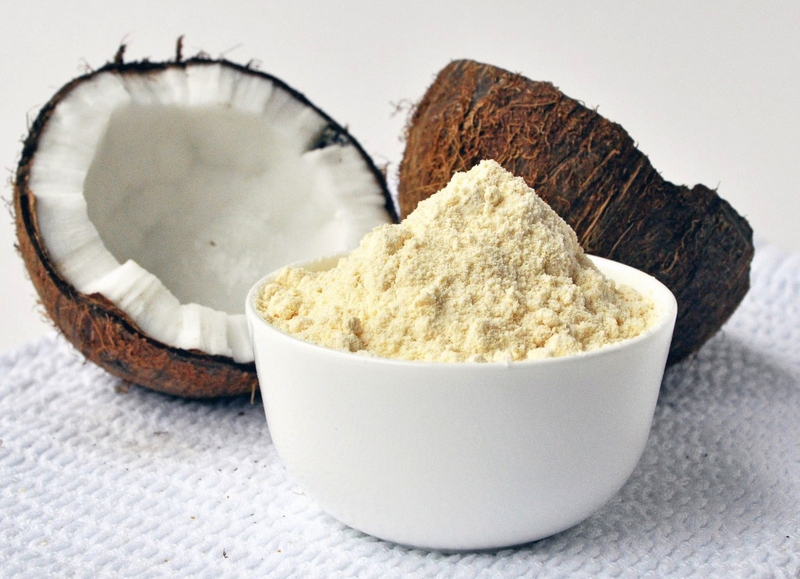When you have a ton of recipes for coconut flour, but no coconut flour can be found in the kitchen, it can be frustrating. It is all too common for your store to be out of coconut flour, online prices are high, and you have to wait for some time to be shipped. You think to yourself, “There has to be a substitute for coconut flour that tastes just as good?”
If you are wondering if almond flour, rice flour, or chestnut flour work just as well then this is the place to look. Some coconut flour substitute options may require a little tweaking of the recipe, but it can be done. You may need to add another egg or a little more butter and adjust your cooking times. This article will give you needed information on how to use a substitute for coconut flour and how they compare.

What to Substitute for Coconut Flour
Nut Flours
Almond Flour
Cashew Flour
Chestnut Flour
Macadamia Flour
How much to substitute:
Nut flour are good low-carb and gluten-free options for baking. You need to use 25 percent of what you would be using in coconut flour. In cakes that require eggs, use 50 percent of what you would use in coconut flour.
Grain Flour
Amaranth Flour (Use 10 to 20 percent of what you would use in coconut flour)
Sorghum Flour (Use 25 to 30 percent of what you would use in coconut flour)
Rice Flour (Brown rice flour is nutty, white rice has no flavor. Use finely ground and mix with a flour high in protein)
Grass Flours
Buckwheat (High Protein, adds texture)
Wild Rice (High Protein, adds texture)
Montina (High Protein, adds texture)
These flours need to be used sparingly to avoid overpowering any other flavors you have in your baked goods. Use only 25 to 30 percent of what you would use in coconut flour. If you are using Buckwheat flour to make rolls or breads, use a whole cup for a nutty wheat flavor.
Root Flours
Arrowroot
Potato
Tapioca
These flours make baked goods chewy and are good for pizza, pasta, bread and cookies. They can also be used for thickening in sauces and gravy. Use these sparingly to prevent a gummy texture. Use about 25 percent of what you would use in coconut flour.
Beans and Seeds
Garbanzo Bean Flour
Pea Flour
Navy Bean Flour
Soybean Flour (Can be an allergen in some people)
Bean flour gives your baked goods fiber and proteins. They have a strong flavor so use them with other things that have strong flavors like chocolate. Use about 30 percent of what you would use in coconut flour.
Chia Seed Flour
Flax Flour
Hemp Flour
Quinoa Flour
Teff (This is a seed that comes from Ethiopia and has been used since ancient times. It is very high protein and nutty. It is good for making crackers, eaten as cereal and can be used in small amounts to make breads, cookies, pizza, and muffins.
These are high in fiber and can even be soaked in water to make vegan egg replacer. When using as flour, use dry at 25 percent of what you would use in coconut flour.
Tips for Using Coconut Flour Replacement
Flour Blends
When using a substitute for coconut flour, make sure you make a flour blend. Here are some examples:
High Protein Flour: Take 1 ½ cups white rice flour, 1 ¾ cups tapioca flour, 2 ¼ cups soy flour and mix together. Recipes made with this substitute for coconut flour will be denser.
All Purpose Flour: Take ½ cup rice flour, ¼ cup tapioca flour, and ¼ cup potato flour and mix together. This blend is good for lighter recipes such as breads, pancakes, and muffins.
Liquids
You will also need to adjust your liquids. Coconut flour needs more liquid and eggs than other flours. Any recipes that call for coconut flour and you use a coconut flour replacement, you will need to adjust your liquids down.
Here is the ratio:
1 cup Coconut Flour = 6 Beaten Eggs + 1 cup liquid (Milk or Water)
For example: If you are using ¼ cup flour substitute, you will use 2 beaten eggs and ¼ cup milk or water.
Ratio
Coconut flour is a little tricky to bake with. It takes very little coconut flour in relation to other flours. If you use whole wheat flour the ratio of coconut flour is as follows:
3 cups Whole Wheat Flour = ½ to ¾ coconut flour
In the same sense, when you use a coconut flour substitute, adjust your numbers up or down for the new flour. The percentages above for each type of coconut flour substitute will help you gauge how much of the new flour to use in the recipe. It may take a few “trial and error” runs to see what works best.
Since coconut flour requires more liquid and less of the coconut flour, you will also need to use less liquid if you are using a substitute for coconut flour. When adjusting liquid and eggs down, make sure you won’t need to use xanthan gum in the recipe. Xanthan gum is an egg replacer that gives batter its gummy texture. Some gluten-free recipes and flours require xanthan gum for binding the flour together since it does not contain gluten.

View All Comments /Add Comment